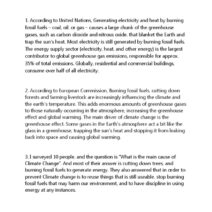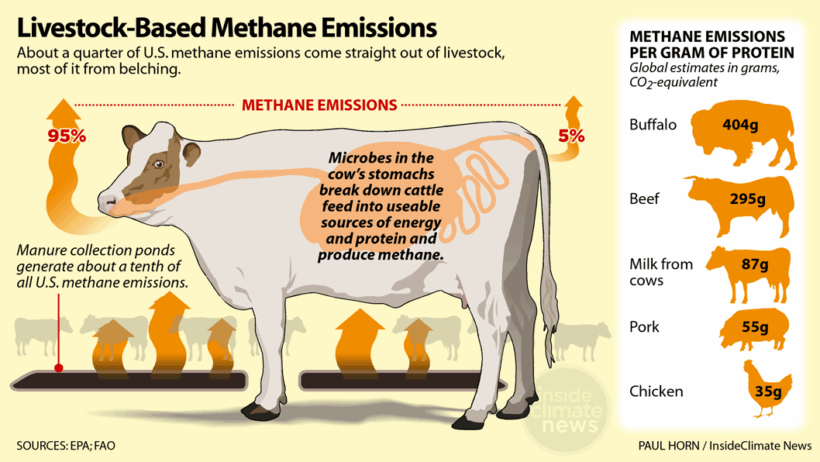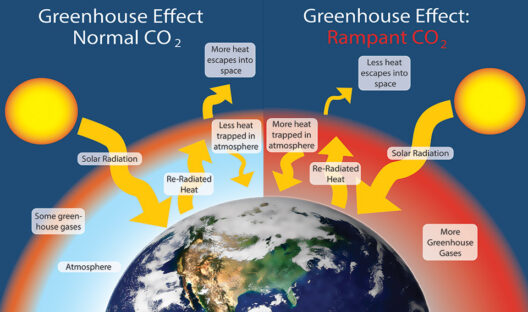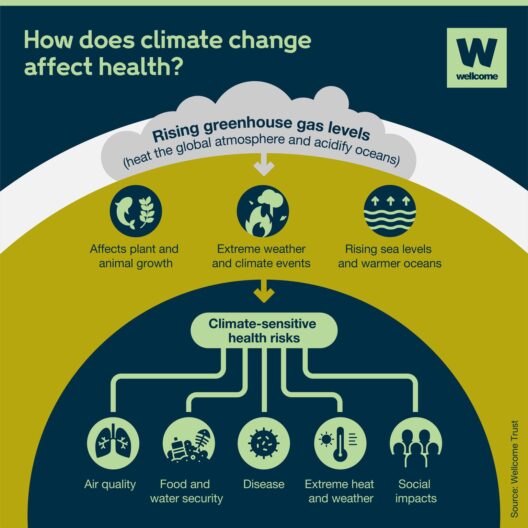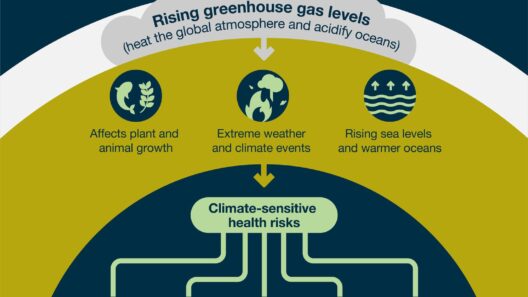In an era where climate change looms larger than ever before, the contribution of livestock to greenhouse gas emissions has emerged as a critical topic. If you’ve ever pondered, “How can a cow affect the atmosphere?”, you’re not alone. The challenge here is recognizing the silent yet potent role that livestock play in our environment, primarily through livestock-derived methane emissions. This article aims to elucidate the underlying mechanisms of this phenomenon and explore its broader implications for our planet.
Methane (CH₄) is a greenhouse gas with a global warming potential over 25 times greater than carbon dioxide over a century. A significant proportion of methane emissions originate from agricultural sources, particularly ruminant animals like cows, sheep, and goats. These animals produce methane during digestion through a process called enteric fermentation. This process is inherently tied to their unique digestive systems, which host bacteria that break down complex plant materials. As a result, these animals inadvertently release methane during respiration and belching—alarming considering livestock population trends.
The scale of livestock farming is immense. In 2021 alone, it was estimated that there were over 1.5 billion cows globally, contributing a staggering volume of methane to the atmosphere. But what does this look like in more tangible terms? The emissions from just one cow in a year can equate to the greenhouse gas impact of driving a conventional car for several months. Now imagine the cumulative impact when we consider the enormity of livestock production worldwide.
The implications of this methane problem extend beyond the immediate atmospheric concerns. When methane is released, it not only traps heat but also contributes to secondary pollutants, leading to ground-level ozone formation, a precursor to smog. This creates a cascading effect on both climate and public health. Air quality deteriorates, impacting respiratory health, agricultural productivity, and even wildlife habitats. Those picturesque farmlands? They are also at risk from the runaway impacts of livestock emissions.
As we delve deeper, we encounter solutions and challenges in mitigating these methane emissions. Some researchers advocate for dietary changes in livestock, such as incorporating seaweed into their diets. Studies have shown that certain seaweeds can reduce methane production by up to 80% during digestion. This poses a tantalizing question: could a simple dietary modification be the key to significantly reducing livestock-related methane emissions?
However, even with promising solutions, the implementation is fraught with hurdles. Economically, there are substantial costs tied to changing established farming practices. Additionally, there is a psychological barrier among farmers and consumers alike—resistance to change and an attachment to traditional methods may impede progress. To address this, education and awareness are paramount. Engaging farmers through incentives and providing information about the benefits of reducing methane emissions could foster a more sustainable approach.
Moreover, the importance of supporting local and sustainable farming practices cannot be understated. By prioritizing family-owned farms that employ ethical farming practices over industrial farming models, we can cultivate a system that not only minimizes environmental impact but also supports local economies. This shift not only addresses methane emissions but also encourages biodiversity and healthier ecosystems.
Another approach to curbing methane emissions from livestock is enhancing manure management. Livestock manure is a significant source of methane, yet innovative technologies can convert this waste into bioenergy, effectively reducing emissions. Strategies such as anaerobic digestion can capture methane from manure and repurpose it as biogas. However, the widespread adoption of such technologies faces similar economic and logistical challenges as dietary changes.
It’s vital to recognize that livestock is not the only contributing factor to methane emissions; other sources such as fossil fuel extraction and landfills also play substantial roles. To tackle the climate crisis effectively, a holistic approach that encompasses various sectors—agriculture, energy, waste management—is essential. Policy frameworks and international agreements need to reflect this interconnectedness to drive substantial change.
Furthermore, addressing the methane problem requires comprehensive data collection and a focused research agenda. Understanding regional variations in livestock emissions and their contributing factors can target solutions effectively. Advanced technologies, such as satellite imaging and AI, offer promising avenues for enhancing monitoring efforts and providing data-driven insights on emission patterns.
The conversation surrounding livestock and methane emissions is intricate yet critical. It encapsulates a challenge that requires collaboration, innovation, and determination. While the task appears daunting, it is essential that industries, policymakers, and consumers unite in their efforts to mitigate these emissions. Will we heed the call to action and address the livestock-related methane issue with the urgency it deserves? Only through concerted efforts can we hope to protect our atmosphere and build a sustainable future for generations to come.
In conclusion, the methane problem is not just a livestock issue; it’s a broader challenge of environmental stewardship. Every individual, from farmers to consumers, has a role to play in this tapestry of change. By fostering informed practices, advocating for innovative solutions, and implementing supportive policies, we can collectively harness the power of cooperation to confront the methane challenge. The atmosphere’s well-being is intricately linked to our choices, and now is the time to make changes that matter.
